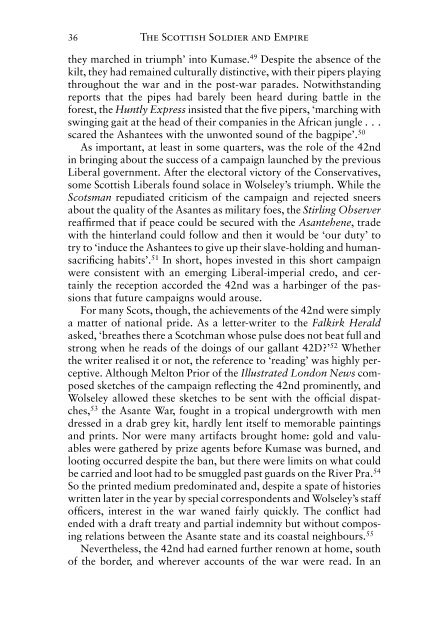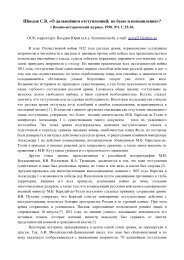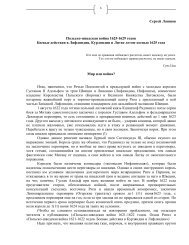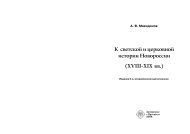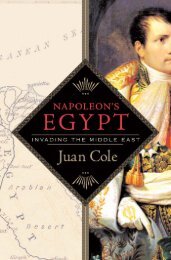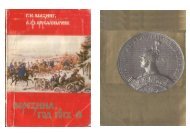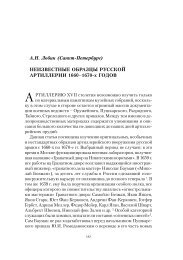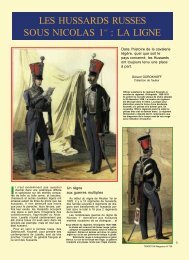The Scottish soldier and Empire, 1854-1902 - Reenactor.ru
The Scottish soldier and Empire, 1854-1902 - Reenactor.ru
The Scottish soldier and Empire, 1854-1902 - Reenactor.ru
Create successful ePaper yourself
Turn your PDF publications into a flip-book with our unique Google optimized e-Paper software.
36 <strong>The</strong> <strong>Scottish</strong> Soldier <strong>and</strong> <strong>Empire</strong><br />
they marched in triumph’ into Kumase. 49 Despite the absence of the<br />
kilt, they had remained culturally distinctive, with their pipers playing<br />
throughout the war <strong>and</strong> in the post-war parades. Notwithst<strong>and</strong>ing<br />
reports that the pipes had barely been heard during battle in the<br />
forest, the Huntly Express insisted that the five pipers, ‘marching with<br />
swinging gait at the head of their companies in the African jungle . . .<br />
scared the Ashantees with the unwonted sound of the bagpipe’. 50<br />
As important, at least in some quarters, was the role of the 42nd<br />
in bringing about the success of a campaign launched by the previous<br />
Liberal government. After the electoral victory of the Conservatives,<br />
some <strong>Scottish</strong> Liberals found solace in Wolseley’s triumph. While the<br />
Scotsman repudiated criticism of the campaign <strong>and</strong> rejected sneers<br />
about the quality of the Asantes as military foes, the Stirling Observer<br />
reaffirmed that if peace could be secured with the Asantehene, trade<br />
with the hinterl<strong>and</strong> could follow <strong>and</strong> then it would be ‘our duty’ to<br />
try to ‘induce the Ashantees to give up their slave-holding <strong>and</strong> humansacrificing<br />
habits’. 51 In short, hopes invested in this short campaign<br />
were consistent with an emerging Liberal-imperial credo, <strong>and</strong> certainly<br />
the reception accorded the 42nd was a harbinger of the passions<br />
that future campaigns would arouse.<br />
For many Scots, though, the achievements of the 42nd were simply<br />
a matter of national pride. As a letter-writer to the Falkirk Herald<br />
asked, ‘breathes there a Scotchman whose pulse does not beat full <strong>and</strong><br />
strong when he reads of the doings of our gallant 42D?’ 52 Whether<br />
the writer realised it or not, the reference to ‘reading’ was highly perceptive.<br />
Although Melton Prior of the Illustrated London News composed<br />
sketches of the campaign reflecting the 42nd prominently, <strong>and</strong><br />
Wolseley allowed these sketches to be sent with the official dispatches,<br />
53 the Asante War, fought in a tropical undergrowth with men<br />
dressed in a drab grey kit, hardly lent itself to memorable paintings<br />
<strong>and</strong> prints. Nor were many artifacts brought home: gold <strong>and</strong> valuables<br />
were gathered by prize agents before Kumase was burned, <strong>and</strong><br />
looting occurred despite the ban, but there were limits on what could<br />
be carried <strong>and</strong> loot had to be smuggled past guards on the River Pra. 54<br />
So the printed medium predominated <strong>and</strong>, despite a spate of histories<br />
written later in the year by special correspondents <strong>and</strong> Wolseley’s staff<br />
officers, interest in the war waned fairly quickly. <strong>The</strong> conflict had<br />
ended with a draft treaty <strong>and</strong> partial indemnity but without composing<br />
relations between the Asante state <strong>and</strong> its coastal neighbours. 55<br />
Nevertheless, the 42nd had earned further renown at home, south<br />
of the border, <strong>and</strong> wherever accounts of the war were read. In an


